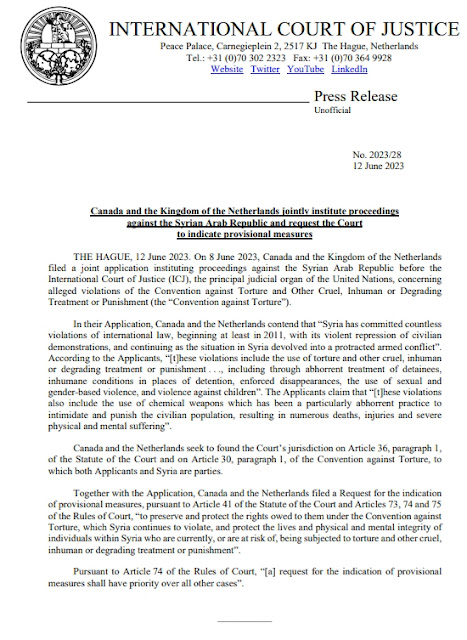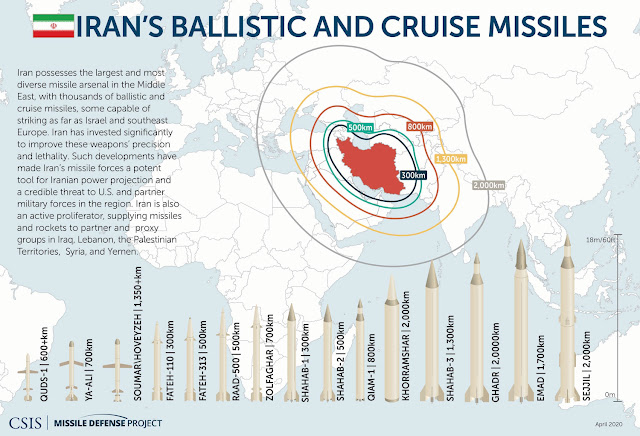The Right Tools To Build Nations
By Samuel R. Berger, Brent Scowcroft
The Washington Post, July 27, 2005
Last month, Baghdad's mayor threatened to resign over funding shortfalls, citing the city's unreliable water supply. Insurgents had damaged a water main, leaving 2 million residents without clean water. Like its water supply, Iraq's economy and infrastructure rehabilitation effort remains shaky. So, too, is the security situation and political transition.
Military conflict has two dimensions: winning wars and winning the peace. We excel in the first, but without an equal focus on the second, combat victories can be lost. Since 1993, the United States has undertaken six major nation-building operations. There were successes and failures, but one result was a contentious debate about U.S. involvement in such missions.
Sept. 11 transformed the debate. No longer are failing states and faraway conflicts viewed simply as a humanitarian concern. As President Bush said, "Weak states like Afghanistan can pose as great a danger to our national interests as strong states." Despite this recognition, the stark reality is that the United States does not have the right structural capability to stabilize and rebuild nations. Responsibility is diffuse and authority is uncertain. The proper roles of the military and civilian agencies have not been articulated. And civilian players desperately need a "unified command" structure to align policies, programs and resources.
The magnitude of the Iraq mission may be unique, but the need for prepared military and civilian personnel is not. Failing states and those emerging from conflict will remain part of the landscape, as will demand for U.S. involvement. So if we know the problem, what is the solution? The Council on Foreign Relations recently convened a task force to explore this question, leading to some suggestions:
* At the highest level, clear lines of authority must be drawn, especially to manage the often contradictory roles of the military and civilian agencies. The National Security Council is best suited for this task via a new directorate for post-conflict reconstruction.
* We must realize that no matter how experienced civilians may be, the military always will have the main responsibility for security in an immediate post-combat setting. Since Vietnam, the military has resisted an expanded stabilization and reconstruction role. The focus on high-intensity conflict means that the United States is winning wars faster and with fewer forces and casualties. But that "transformation" has had an unintended consequence. Rapid victory collapses the enemy but does not destroy it. Adversaries can go underground to regroup, creating a need for more troops for longer periods of time after combat ends. The United States needs a general-purpose force of sufficient size and skill to win the peace. This message must come unambiguously from the top. The secretary of defense should designate stabilization and reconstruction operations as core military tasks, with attendant changes in the training and preparation of U.S. forces. As a start, the temporary increase in troop levels should be made permanent.
* The civilian picture is in need of overhaul. Critical gaps in capability remain unfilled; elsewhere, mandates overlap. Until real authority is established, true accountability will remain elusive. As a first step, the State Department should be empowered to oversee all civilian stabilization and reconstruction activities, with the U.S. Agency for International Development responsible for daily operations. The new State Department coordinator for stabilization and reconstruction should be elevated to undersecretary status, backed up by a replenishing fund of $500 million that can be deployed quickly, easing reliance on supplemental appropriations for crises. A primary focus must be filling major gaps, including civilian police, judicial resources and demobilization and reintegration.
* To address the unacceptable time lags that hamper initial reconstruction efforts, the United States should push to create a $1 billion trust fund under the auspices of the Group of Eight to be initialized for top priority, year-one projects.
* Not every mission is or should be Iraq or Afghanistan. In many cases, U.N.-led operations are the most effective means of international community involvement. The $4 billion annual cost of all 17 U.N.-led deployments is a relative national security bargain. But multilateral peacekeeping is straining at the seams too. The Security Council continues to authorize peacekeeping missions at a rate that outpaces the United Nations' capacity. Member states are disinclined to contribute necessary troops and equipment, while failed states spiral into chaos and mass killings go unanswered.
Among other steps, the United Nations should focus more on interoperability of national forces that can be deployed in a multilateral setting. Further, new missions should not be authorized until the necessary resources are identified.
The United States needs an effective United Nations. Reform will require more attention and resources from key contributors such as America and its allies. By getting our own house in order, the United States will be in a stronger position to persuade others to change.
Former national security advisers Samuel R. Berger and Brent Scowcroft chair an independent Council on Foreign Relations task force on improving U.S. post-conflict capabilities.
In the Wake of War: Improving U.S. Post-Conflict Capabilities
By Samuel R. Berger, Brent Scowcroft
The Washington Post, July 27, 2005
Last month, Baghdad's mayor threatened to resign over funding shortfalls, citing the city's unreliable water supply. Insurgents had damaged a water main, leaving 2 million residents without clean water. Like its water supply, Iraq's economy and infrastructure rehabilitation effort remains shaky. So, too, is the security situation and political transition.
Military conflict has two dimensions: winning wars and winning the peace. We excel in the first, but without an equal focus on the second, combat victories can be lost. Since 1993, the United States has undertaken six major nation-building operations. There were successes and failures, but one result was a contentious debate about U.S. involvement in such missions.
Sept. 11 transformed the debate. No longer are failing states and faraway conflicts viewed simply as a humanitarian concern. As President Bush said, "Weak states like Afghanistan can pose as great a danger to our national interests as strong states." Despite this recognition, the stark reality is that the United States does not have the right structural capability to stabilize and rebuild nations. Responsibility is diffuse and authority is uncertain. The proper roles of the military and civilian agencies have not been articulated. And civilian players desperately need a "unified command" structure to align policies, programs and resources.
The magnitude of the Iraq mission may be unique, but the need for prepared military and civilian personnel is not. Failing states and those emerging from conflict will remain part of the landscape, as will demand for U.S. involvement. So if we know the problem, what is the solution? The Council on Foreign Relations recently convened a task force to explore this question, leading to some suggestions:
* At the highest level, clear lines of authority must be drawn, especially to manage the often contradictory roles of the military and civilian agencies. The National Security Council is best suited for this task via a new directorate for post-conflict reconstruction.
* We must realize that no matter how experienced civilians may be, the military always will have the main responsibility for security in an immediate post-combat setting. Since Vietnam, the military has resisted an expanded stabilization and reconstruction role. The focus on high-intensity conflict means that the United States is winning wars faster and with fewer forces and casualties. But that "transformation" has had an unintended consequence. Rapid victory collapses the enemy but does not destroy it. Adversaries can go underground to regroup, creating a need for more troops for longer periods of time after combat ends. The United States needs a general-purpose force of sufficient size and skill to win the peace. This message must come unambiguously from the top. The secretary of defense should designate stabilization and reconstruction operations as core military tasks, with attendant changes in the training and preparation of U.S. forces. As a start, the temporary increase in troop levels should be made permanent.
* The civilian picture is in need of overhaul. Critical gaps in capability remain unfilled; elsewhere, mandates overlap. Until real authority is established, true accountability will remain elusive. As a first step, the State Department should be empowered to oversee all civilian stabilization and reconstruction activities, with the U.S. Agency for International Development responsible for daily operations. The new State Department coordinator for stabilization and reconstruction should be elevated to undersecretary status, backed up by a replenishing fund of $500 million that can be deployed quickly, easing reliance on supplemental appropriations for crises. A primary focus must be filling major gaps, including civilian police, judicial resources and demobilization and reintegration.
* To address the unacceptable time lags that hamper initial reconstruction efforts, the United States should push to create a $1 billion trust fund under the auspices of the Group of Eight to be initialized for top priority, year-one projects.
* Not every mission is or should be Iraq or Afghanistan. In many cases, U.N.-led operations are the most effective means of international community involvement. The $4 billion annual cost of all 17 U.N.-led deployments is a relative national security bargain. But multilateral peacekeeping is straining at the seams too. The Security Council continues to authorize peacekeeping missions at a rate that outpaces the United Nations' capacity. Member states are disinclined to contribute necessary troops and equipment, while failed states spiral into chaos and mass killings go unanswered.
Among other steps, the United Nations should focus more on interoperability of national forces that can be deployed in a multilateral setting. Further, new missions should not be authorized until the necessary resources are identified.
The United States needs an effective United Nations. Reform will require more attention and resources from key contributors such as America and its allies. By getting our own house in order, the United States will be in a stronger position to persuade others to change.
Former national security advisers Samuel R. Berger and Brent Scowcroft chair an independent Council on Foreign Relations task force on improving U.S. post-conflict capabilities.
In the Wake of War: Improving U.S. Post-Conflict Capabilities


